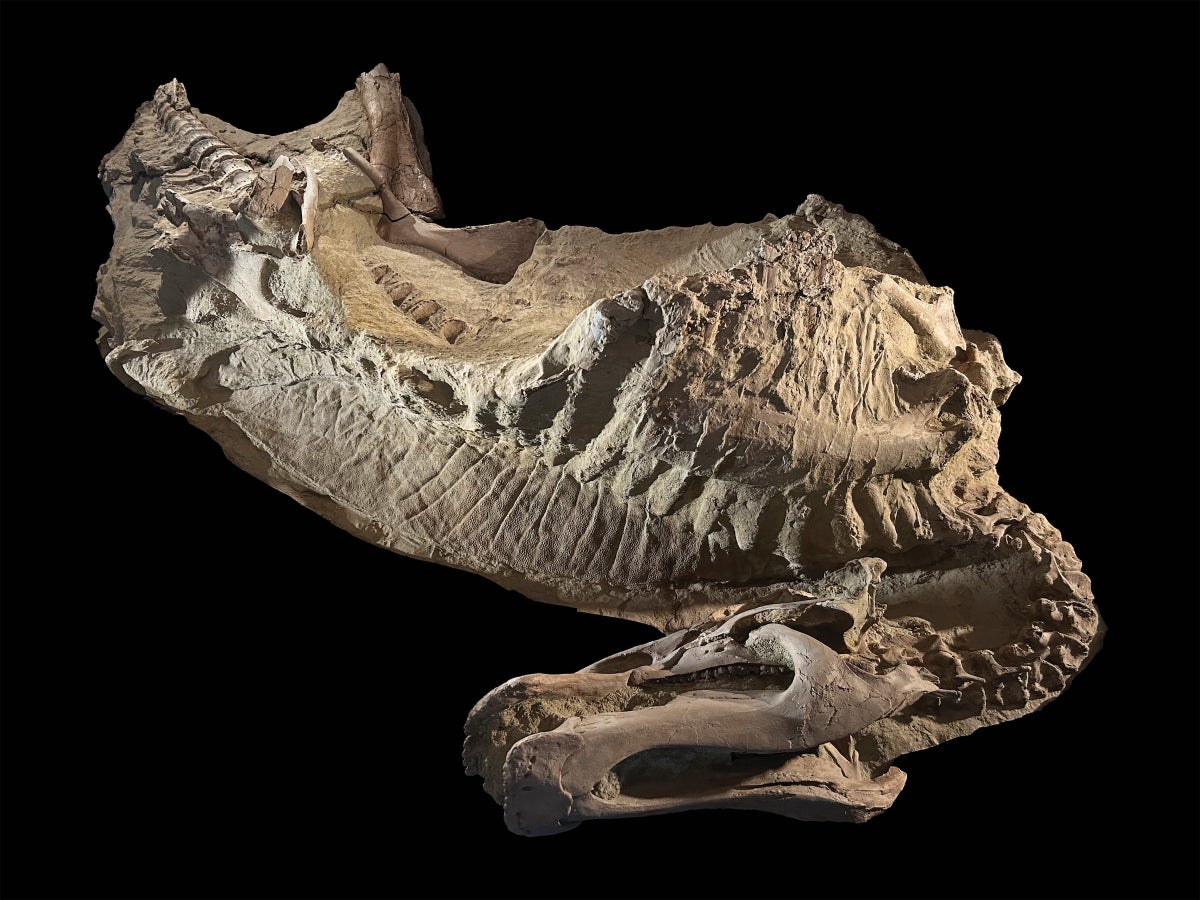In a groundbreaking new study published in *Science*, paleontologists have challenged long-held beliefs about the nature of so-called “dinosaur mummies” found in Wyoming, revealing that what was once thought to be fossilized dinosaur skin and flesh is actually not preserved soft tissue at all. Instead, these remarkable fossils are intricate clay molds formed by microbial activity during the creatures’ decay process, fundamentally altering our understanding of how these exceptional fossils were created.
The story begins over a century ago when Charles Sternberg, a prolific fossil collector, unearthed the partial remains of a duck-billed dinosaur, *Edmontosaurus annectens*, in the sandstone of the Lance Formation in eastern Wyoming. What made this discovery extraordinary was the presence of what appeared to be fossilized flesh and skin covering the skeleton, making it the first known “dinosaur mummy”—a rare fossil preserving more than just bone. Sternberg found a second dinosaur mummy nearby two years later, cementing the significance of the site. For decades, these fossils were considered to be some of the most direct links to the appearance of dinosaurs in life, offering a glimpse of their scaly skin and other soft tissues rarely preserved in the fossil record.
However, the new research led by University of Chicago paleontologist Paul Sereno reveals a surprising twist. Through advanced analysis of recently discovered “dinosaur mummies” from the same Wyoming region, Sereno and his team found compelling evidence that the preserved “skin” is not organic tissue but rather a delicate film of clay that formed in the place of the soft parts. This clay layer, less than a millimeter thick, was created when microbes colonized the carcasses during their decay, attracting clay minerals that eventually hardened into detailed molds capturing the shapes of the skin and other soft tissues. This process was previously known to occur in oxygen-poor environments such as deep-sea muds or lagoons, but Sereno notes that no one expected it to happen in a relatively oxygen-rich setting like a river floodplain, where the dinosaurs were buried suddenly by sand.
Sereno proposes that the dinosaur carcasses first dried out during a drought, causing their soft tissues to desiccate. Then, a sudden flood brought a rapid burial of sediment that trapped the remains. As the wet carcasses lay buried, bacteria formed a biofilm on their surfaces, which attracted surrounding clay particles. Weeks later, the actual flesh and skin decayed and were washed away by groundwater, but the clay film remained, preserving a precise mold of the animal’s outer form. This process explains the exquisite detail seen in these fossils—such as scaly skin patterns and even fleshy crests on the backs of juvenile *Edmontosaurus* specimens—despite the absence of any actual preserved organic tissue.
Stephanie Drumheller, a paleontologist at the University of Tennessee who was not involved in the study, praises the research for its comprehensive approach. “The sort of basic question of ‘How did this thing fossilize in the first place?’ hasn’t received as much attention in the past,” she says. “I think this was a really great deep dive into this one area where we do see several specimens.” The findings underscore the importance of carefully examining fossilization processes, especially for rare and unusual fossil types like “dinosaur mummies.”
Sereno and his colleagues have expanded the catalogue of these remarkable fossils, uncovering multiple new specimens in close proximity to Sternberg’s original finds. Within a roughly 10-kilometer radius—an area Sereno dubs the “mummy zone”—they have discovered additional *Edmontosaurus* mummies, as well as mummified remains of other iconic dinosaurs such as *Triceratops horridus* and *Tyrannosaurus rex*. Among the newly described *Edmontosaurus* fossils, two individuals stand out: a two-year-old dubbed “Ed, Jr.”, the first juvenile dinosaur mummy ever found, and an older specimen estimated to be between five and eight years old named “Ed, Sr.” These finds are significant not only for their preservation but also for what they reveal about dinosaur growth and anatomy.
“Ed, Jr.” is especially notable as the first adolescent dinosaur mummy discovered and the first large dinosaur specimen with a fully preserved fleshy outline of its trunk, providing unprecedented insight into the body shape and skin texture of young duck-billed dinosaurs. “Ed, Sr.”, meanwhile, offers unique anatomical features including

